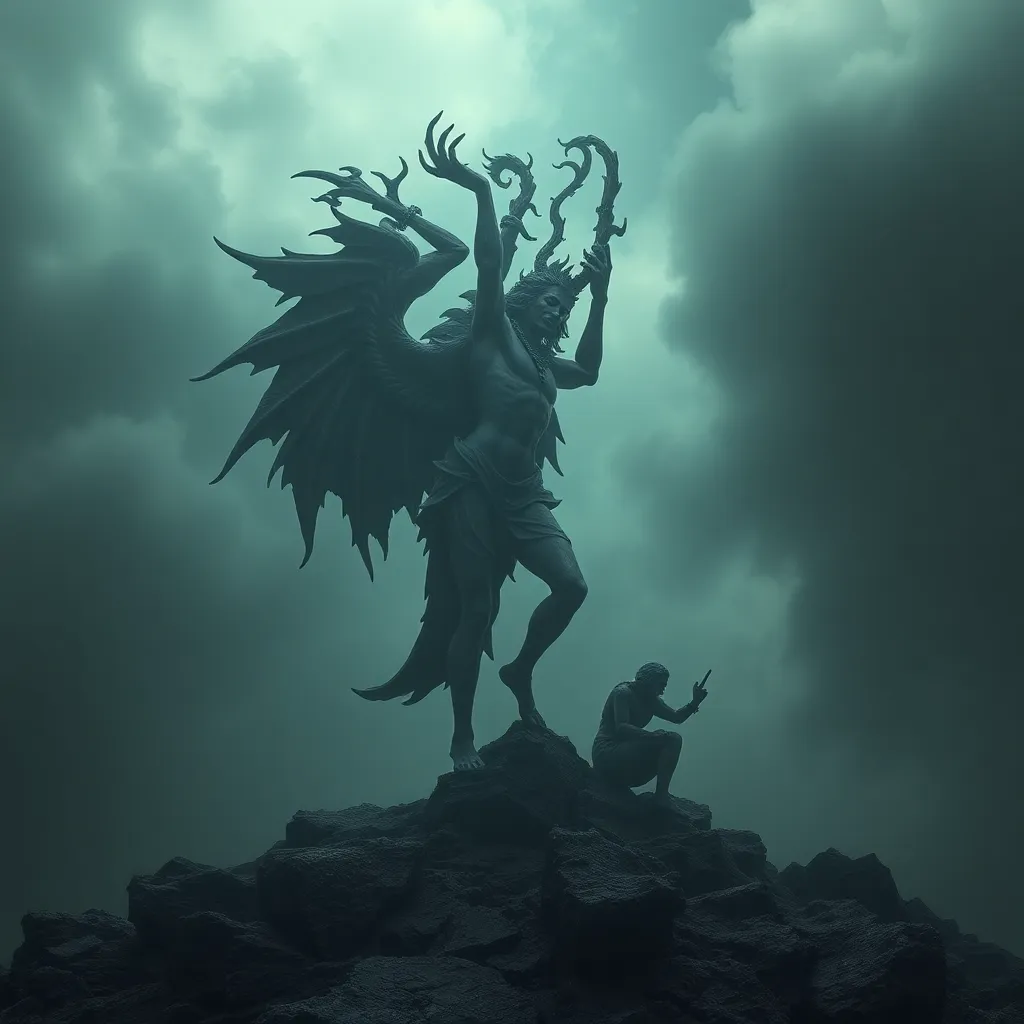Between Myth and Reality: Examining the History of the Loch Ness Monster
I. Introduction
The Loch Ness Monster, affectionately known as “Nessie,” is one of the most famous cryptids in the world. This elusive creature is said to inhabit Loch Ness, a large freshwater lake in the Scottish Highlands. The phenomenon surrounding Nessie has captivated the public imagination for decades, inspiring countless stories, sightings, and theories.
Exploring the myth versus reality of the Loch Ness Monster is significant for understanding how folklore evolves and how humans relate to the natural world. This article aims to delve into the history of the Loch Ness Monster, examining its origins, the modern fascination with it, scientific investigations, and the cultural implications it has had over the years.
II. Origins of the Loch Ness Monster Legend
The legend of the Loch Ness Monster dates back to ancient times, with historical accounts and early sightings contributing to its mystique.
A. Historical accounts and early sightings
One of the earliest mentions of a creature in Loch Ness comes from the “Life of St. Columba,” written in the 6th century. According to the account, St. Columba encountered a large beast while crossing the loch, which he allegedly subdued with the power of his faith.
B. Celtic myths and local folklore
The Scottish Highlands are rich with Celtic mythology, which includes tales of water spirits and monstrous creatures. These stories likely played a significant role in shaping the narrative surrounding Loch Ness and its mysterious inhabitant.
C. The role of the Scottish Highlands in shaping the narrative
The rugged landscape and deep waters of the Highlands contribute to the atmospheric setting for the Loch Ness Monster legend. The isolation of the area and the natural beauty of the loch have fueled the imagination of locals and visitors alike.
III. The Modern Popularization of the Loch Ness Monster
The Loch Ness Monster gained international fame in the 20th century, particularly after the infamous photograph taken in 1934.
A. The impact of the 1934 “surgeon’s photograph”
This photograph, purportedly showing Nessie’s head and neck emerging from the water, became a pivotal moment in the lore of the Loch Ness Monster. It drew widespread media attention and sparked a frenzy of interest in the creature.
B. Media coverage and public fascination
Following the publication of the surgeon’s photograph, media coverage intensified. Newspapers and magazines published sensationalized stories, further entrenching the Loch Ness Monster in popular culture.
C. The rise of tourism in the Loch Ness area
The myth of Nessie has significantly impacted tourism in the region. Visitors flock to Loch Ness, hoping to catch a glimpse of the elusive creature, leading to the development of various tourism-related businesses.
- Loch Ness cruises
- Visitor centers
- Nessie-themed merchandise
IV. Scientific Investigations and Research Efforts
Over the years, numerous scientific investigations have attempted to uncover the truth behind the Loch Ness Monster.
A. Overview of various studies conducted on Loch Ness
Since the 1930s, researchers have conducted various studies, including sonar surveys and underwater explorations, to search for evidence of Nessie.
B. Technology used in the search for evidence
Modern technology has played a crucial role in these investigations, including:
- Sonar scanning to map the loch’s depths
- Underwater cameras to capture images of potential creatures
- Drones for aerial surveys of the area
C. Key findings and their implications
Despite extensive research, no conclusive evidence of the Loch Ness Monster has been found. Some studies have suggested that sightings may be attributed to large fish or underwater currents, while others have concluded that Nessie is likely a myth.
V. Psychological and Cultural Factors
Understanding the allure of cryptids like the Loch Ness Monster requires examining the psychological and cultural factors at play.
A. The allure of cryptids and the human tendency to believe in myths
Humans have a natural tendency to believe in the extraordinary. Cryptids like Nessie tap into our fascination with the unknown and our desire for mystery.
B. The influence of popular culture
The Loch Ness Monster has been featured in various media, including films, books, and documentaries. This portrayal has reinforced the myth and maintained public interest.
C. Impact of the Loch Ness Monster on local identity and economy
The Loch Ness Monster has become a symbol of local identity for the Scottish Highlands, shaping the region’s cultural narrative and contributing to its economy through tourism.
VI. Debunking the Myths: Explanations for Sightings
Many of the sightings and stories surrounding the Loch Ness Monster can be explained through more rational means.
A. Natural phenomena and misidentifications
Many reported sightings have been attributed to natural phenomena, such as waves, logs, or even large fish like sturgeons.
B. Hoaxes and fabricated evidence throughout history
Throughout history, several hoaxes have contributed to the legend of Nessie. The most notable include:
- The surgeon’s photograph, which was later revealed to be a hoax
- Various fake footprints and models
C. The role of folklore in shaping perceptions
Local folklore has played a significant role in shaping perceptions of the Loch Ness Monster. Stories passed down through generations have contributed to the mystique and allure of Nessie.
VII. The Loch Ness Monster in Contemporary Discourse
In contemporary society, the Loch Ness Monster remains a topic of interest and debate.
A. Current attitudes towards the Loch Ness Monster
<pToday, attitudes towards Nessie are mixed, with some viewing the creature as a beloved myth and others as a relic of superstition.
B. The balance between myth and reality in public perception
Despite the lack of scientific evidence, the Loch Ness Monster continues to capture the public’s imagination, balancing between myth and reality.
C. Ongoing interest and new theories emerging
New theories about the Loch Ness Monster continue to emerge, often fueled by advancements in technology and new scientific research, keeping the legend alive.
VIII. Conclusion
The enduring legacy of the Loch Ness Monster speaks to the power of myth in human culture. It highlights our fascination with the unknown and the stories we create to make sense of our world.
Whether as a tourist attraction or a subject of scientific inquiry, the Loch Ness Monster remains a compelling intersection of belief and evidence, reminding us of the rich tapestry of folklore that shapes our understanding of history and culture.




